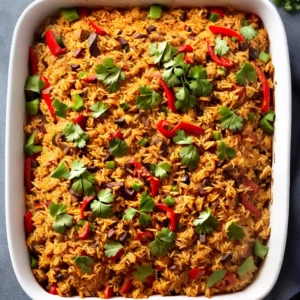How Many Ounces Are in 750 ml
Welcome to my measurement conversion guide, where I’ll answer the question, “How many ounces are in 750 ml?”. Whether you’re a cook, bartender, or simply curious about unit conversions, understanding the relationship between milliliters and ounces is essential. In this guide, we’ll explore the importance of this conversion, discuss tools and techniques for accurate measurements, and highlight the practical benefits of knowing how many ounces are in a 750 ml bottle.
Key Takeaways – How Many Ounces Are in 750 ml
- 750 ml is approximately equal to 25.4 fluid ounces.
- Understanding the conversion between milliliters and ounces is important for accurate recipe measurements and comparing products.
- Tools such as measuring cups with smaller increments or digital scales can help measure ounces in a 750 ml bottle.
- Being precise when measuring ounces is crucial, and leveling off the liquid and using a measuring cup with smaller increments can ensure accuracy.
- Knowing how many ounces are in a 750 ml bottle can be beneficial for measuring drinks, cooking, baking, and comparing prices.
Understanding the Metric and Imperial Systems
Before we dive into the conversion, let’s take a moment to understand the two systems of measurement involved: the metric system and the imperial system.
The metric system is a decimal-based system of measurement that is widely used around the world. It is based on units of ten and is known for its simplicity and ease of use. In the metric system, the base unit of volume is the liter, and the base unit of weight is the gram. Milliliters (ml) are a subunit of liters, representing one thousandth of a liter. This system is commonly used in scientific and medical fields.
The imperial system, on the other hand, is primarily used in the United States and a few other countries. It is based on historical measurements and can be more complex to work with. In the imperial system, fluid ounces are used as the unit of volume. There are 16 fluid ounces in a pint, 8 pints in a gallon, and 128 fluid ounces in a gallon. This system is commonly used in everyday life, especially in cooking and baking.
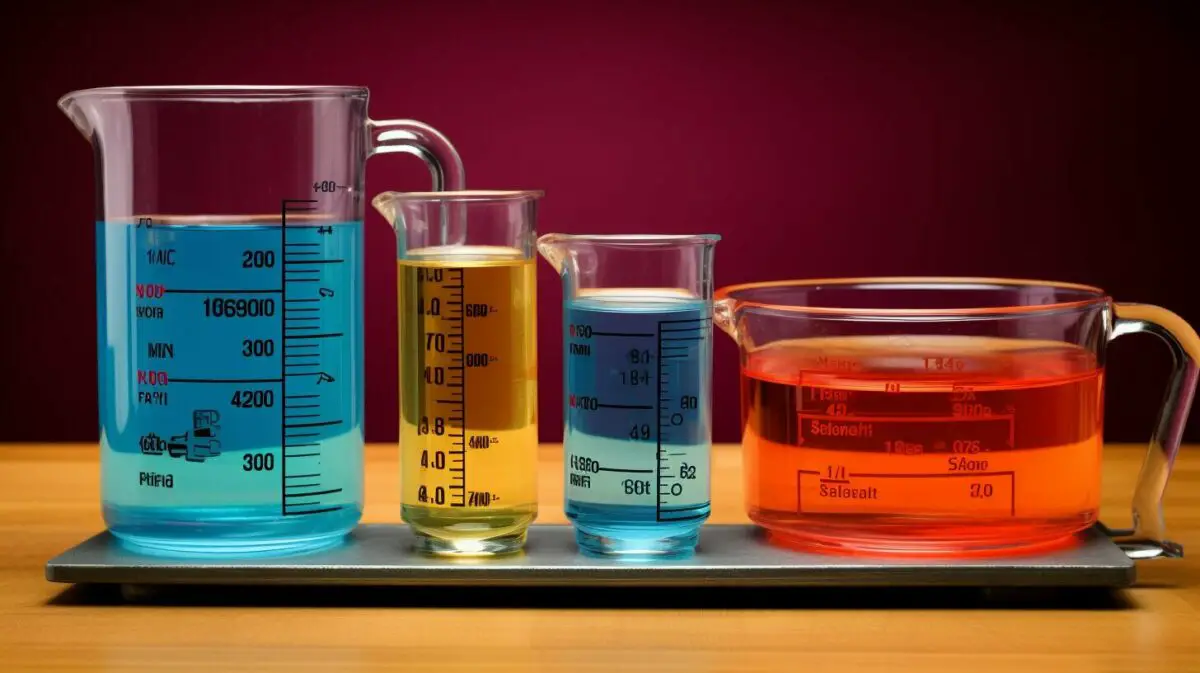
Understanding the differences between the metric and imperial systems is essential when converting between milliliters and ounces. By knowing the conversion factors and utilizing the appropriate tools, you can easily switch between these two systems of measurement and ensure accurate results.
Now that we have a basic understanding of the metric and imperial systems, let’s explore the importance of conversion between milliliters and ounces and how it can positively impact various aspects of our daily lives.
The Importance of Conversion Between Milliliters and Ounces
Being able to convert between milliliters and ounces is crucial, especially in the kitchen, where precision and accuracy in measurements are vital. Whether you are following a recipe, mixing cocktails, or comparing product sizes, understanding the conversion between milliliters and ounces is essential for achieving the desired results. By converting between these two units of measurement, you can ensure that your cooking and baking endeavors are successful and that you have a clear understanding of the quantities you are working with.
One common scenario where this conversion is necessary is when dealing with drink measurements. Many alcoholic beverages, such as spirits and wines, are labeled in milliliters, while recipes and serving sizes often refer to ounces. To accurately measure the alcohol content or pour the right amount for a recipe, it’s important to be able to convert between milliliters and ounces.
Converting between milliliters and ounces also allows for easy comparison of product sizes. For example, if you are considering purchasing a 750 ml bottle of olive oil, knowing that it is approximately equivalent to 25.4 fluid ounces can help you understand how much product you will be getting and make an informed decision.

To assist with measurement conversions, there are various tools and techniques available. Measuring cups with smaller increments can provide more precise measurements for ounces, while digital scales can offer accurate readings for both milliliters and ounces. Utilizing these tools and techniques can help you achieve the desired measurement accuracy, ensuring the success of your culinary endeavors.
| Milliliters | Ounces |
|---|---|
| 100 ml | 3.38 fl oz |
| 250 ml | 8.45 fl oz |
| 500 ml | 16.91 fl oz |
| 750 ml | 25.36 fl oz |
Converting between milliliters and ounces not only helps in the kitchen but also simplifies daily tasks and improves efficiency in various aspects of life. Whether you are measuring liquids, comparing product sizes, or calculating serving portions, having a clear understanding of the conversion between milliliters and ounces is invaluable. By mastering this conversion, you can confidently navigate the world of measurements and ensure accurate results in all your endeavors.
How Many Ounces in 750ml? The Answer Revealed
The answer to the burning question, “How many ounces are in 750 ml?”, is approximately 25.4 fluid ounces. This conversion is crucial when it comes to measuring drinks, such as spirits, as it allows you to calculate alcohol content or serving sizes accurately. Understanding the conversion between milliliters and ounces is not only useful for mixologists but also for anyone who wants to achieve precise recipe measurements or compare products.
When it comes to measuring ounces in a 750 ml bottle, there are various tools available to help you get it right. Measuring cups with smaller increments or digital scales can provide the accuracy needed for your specific requirements. Being precise when measuring ounces is vital, and a few simple techniques can help you achieve it. Make sure to level off the liquid when using a measuring cup and opt for one with smaller increments, as this will ensure accurate measurements.
Knowing how many ounces are in a 750 ml bottle has practical benefits in multiple areas of life. In addition to measuring drinks, this conversion can be incredibly useful in the kitchen, whether you’re cooking or baking. It allows you to follow recipes accurately and achieve consistent results. Furthermore, understanding this conversion can also help you compare prices effectively, ensuring you get the best value for your money.
Converting between different units of measurement
Converting between different units of measurement, such as milliliters and ounces, has the potential to simplify daily tasks and improve overall efficiency. Whether you’re dealing with ingredients in the kitchen, measuring liquids for DIY projects, or following international recipes, having the ability to convert between these units will save you time and effort.
| Related Units of Measurement | Conversion |
|---|---|
| Liters | 1 liter = 33.8 fluid ounces |
| Gallons | 1 gallon = 128 fluid ounces |
| Cups | 1 cup = 8 fluid ounces |
| Pints | 1 pint = 16 fluid ounces |
| Quarts | 1 quart = 32 fluid ounces |
| Tablespoons | 1 tablespoon = 0.5 fluid ounces |
| Teaspoons | 1 teaspoon = 0.17 fluid ounces |
| Cubic Centimeters | 1 cubic centimeter = 0.034 fluid ounces |
| Cubic Inches | 1 cubic inch = 0.55 fluid ounces |
By familiarizing yourself with these related units of measurement and the conversions involved, you’ll have a broader understanding of various measurement systems, allowing you to navigate them effortlessly.
Converting between ounces and milliliters doesn’t have to be complicated. The formula for converting between these two units is straightforward:
1 fluid ounce is equal to 29.57 milliliters
Remember this formula, and you’ll always be equipped to perform conversions quickly and accurately.
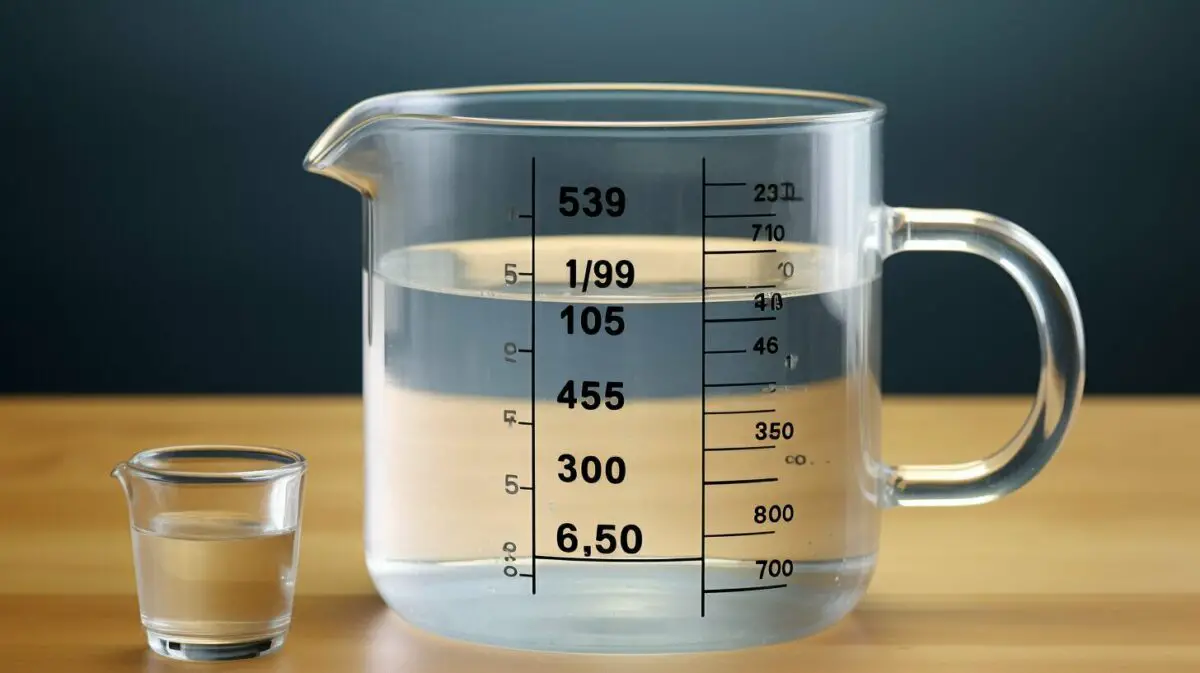
Now that we know the conversion value, let’s explore the tools and techniques that can help us convert milliliters to ounces accurately. When it comes to measuring liquids, having the right tools can make all the difference. One of the most common tools for measuring volumes is a measuring cup with smaller increments. These cups are designed to provide precise measurements for both milliliters and ounces, allowing you to convert between the two with ease. Simply pour the liquid into the cup, ensuring that the cup is on a flat surface and that you are at eye level with the markings. This will help you get an accurate reading and make your conversion more reliable.
Another useful tool for converting milliliters to ounces is a digital scale. This type of scale provides precise measurements in both units, allowing you to measure the weight of liquids and convert it to ounces. Simply place a container on the scale, then reset it to zero. Next, pour the liquid into the container until you reach the desired volume. The scale will display the weight in both milliliters and ounces, making it easy to convert between the two.
If you prefer a more visual approach, there are online converters available that can quickly and accurately convert milliliters to ounces. These converters usually have a user-friendly interface where you input the value in milliliters and instantly get the corresponding measurement in ounces. They are convenient and accessible, making them a great option for those who need to convert measurements on the go.
Lastly, it’s worth mentioning that having a reference table for common conversions can also be helpful. These tables provide a quick reference for converting between various units of measurements, including milliliters and ounces. You can find these tables online or in cooking and baking books. Having one on hand can save you time and ensure that your conversions are accurate.
To sum up, converting milliliters to ounces can be made easier with the right tools and techniques. Whether you prefer using a measuring cup with smaller increments, a digital scale, or an online converter, there are plenty of options available to help you achieve accurate measurements. So the next time you need to convert milliliters to ounces, don’t fret. With the right tools at your disposal, you’ll be able to make precise conversions and ensure your recipes turn out just right.
Conversion Table: Milliliters to Ounces
| Milliliters (ml) | Ounces (fl oz) |
|---|---|
| 100 ml | 3.38 fl oz |
| 200 ml | 6.76 fl oz |
| 300 ml | 10.14 fl oz |
| 400 ml | 13.52 fl oz |
| 500 ml | 16.91 fl oz |
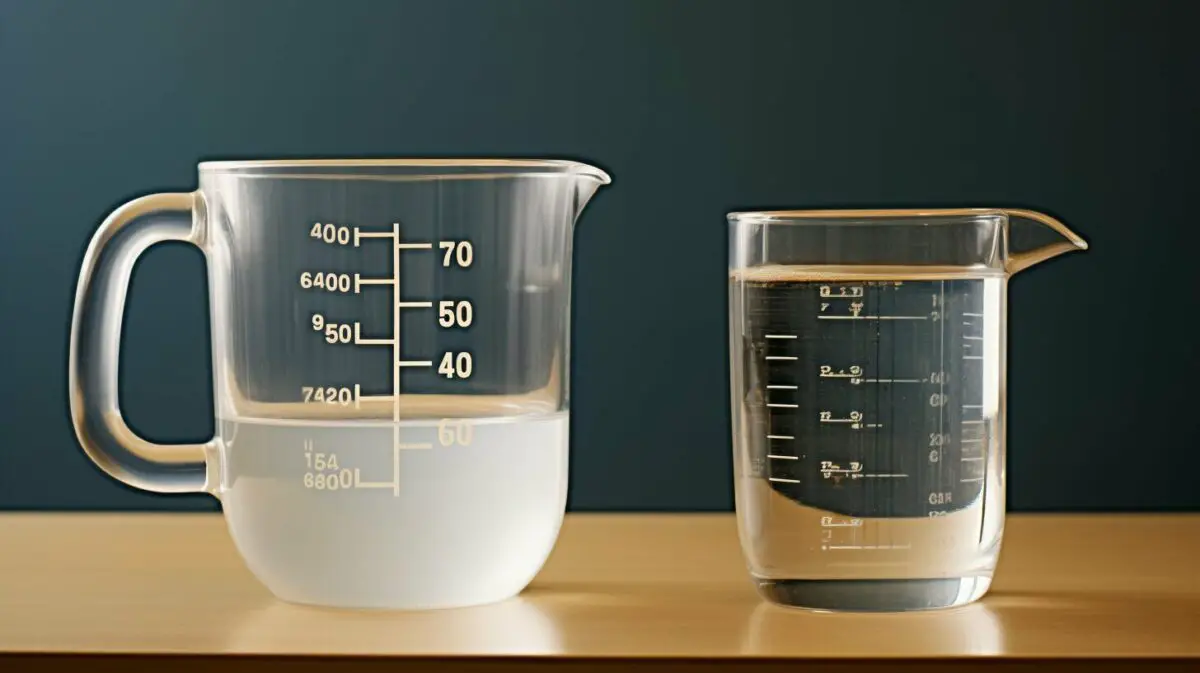
When it comes to measuring fluid ounces, precision is key. Here are some tips to ensure accurate measurements every time.
1. Level off the liquid: When measuring fluid ounces, it’s important to ensure that the liquid is leveled off. This can be done by using the edge of a knife or a straight-edged utensil to remove any excess liquid from the measuring cup. This will help to eliminate any discrepancies in the measurement and ensure accuracy.
2. Use a measuring cup with smaller increments: Oftentimes, standard measuring cups have larger increments, such as 1 cup or 1/2 cup. However, when it comes to measuring fluid ounces, it’s beneficial to use a measuring cup with smaller increments, such as 1/4 cup or 1/8 cup. This allows for more precise measurements and helps to avoid rounding errors.
3. Consider using a digital scale: If you require even greater accuracy, using a digital scale can be a reliable option. Many digital scales provide measurements in both ounces and milliliters, allowing for seamless conversions between the two units. This can be particularly useful when dealing with small quantities or when precision is crucial, such as in baking.

By following these tips, you can ensure accurate measurements when dealing with fluid ounces. Whether you’re measuring ingredients for a recipe, calculating alcohol content, or comparing serving sizes, precision in measurement is essential. Remember to level off the liquid, use a measuring cup with smaller increments, and consider using a digital scale for even greater accuracy. These simple techniques will help you achieve precise measurements in fluid ounces every time!
The Benefits of Knowing How Many Ounces Are in a 750ml Bottle
Having a solid understanding of how many ounces are in a 750 ml bottle can bring a range of benefits to your kitchen and beyond. Whether you’re a cooking enthusiast, a professional chef, or simply someone who wants to make accurate measurements in everyday tasks, knowing this conversion can make a significant difference.
One of the key advantages of knowing how many ounces are in a 750 ml bottle is the ability to measure drinks accurately. This is particularly important when it comes to preparing cocktails or mixed drinks, where precise measurements can affect the taste and balance of the final product. Additionally, understanding the conversion can also help you calculate alcohol content or serving sizes more accurately.
In the culinary world, precise recipe measurements are essential for consistent and delicious results. Many recipes, especially those from international sources, provide measurements in milliliters, while others use ounces. Being able to convert between milliliters and ounces allows you to follow recipes accurately, ensuring that you add the correct amount of each ingredient. It can also simplify the process of comparing products, especially when shopping for imported or specialty ingredients.
To achieve accurate measurements in your kitchen, there are various tools and techniques you can use. Measuring cups with smaller increments allow for more precise measurements, while digital scales provide even greater accuracy. By leveling off the liquid and using a measuring cup with smaller increments, you can ensure that you’re getting the right amount of liquid in your recipes.

Knowing how many ounces are in a 750 ml bottle can benefit you in multiple ways, whether you’re measuring drinks, cooking, baking, or even comparing prices. It simplifies daily tasks, improves accuracy in recipe measurements, and allows for better consistency in your culinary creations. So, next time you come across a recipe or a bottle labeled in milliliters, you’ll have the confidence to convert it effortlessly to ounces and vice versa.
Simplifying Daily Tasks with Measurement Conversions
Converting between different units of measurement, like milliliters and ounces, can make your daily tasks easier and more efficient. Whether you’re cooking, baking, mixing drinks, or simply comparing product sizes, understanding how to convert between milliliters and ounces is essential.
When it comes to measuring liquids, such as spirits or other liquids in a 750 ml bottle, having the ability to convert milliliters to ounces accurately can help you calculate alcohol content or serve the perfect portion size. To achieve precision in your measurements, there are various tools and techniques you can use. For example, measuring cups with smaller increments can provide more accurate readings, while digital scales can ensure precise measurements down to the gram.
To ensure accuracy when measuring in ounces, remember to level off the liquid at the top of the measuring cup and use a cup with smaller increments for smaller portions. These simple steps can help you achieve consistent and accurate measurements each time.
| Measurement Conversion Tools | Benefits |
|---|---|
| Measuring cups with smaller increments | Provides accurate readings for smaller portions |
| Digital scales | Offers precise measurements down to the gram |
Knowing how many ounces are in a 750 ml bottle can have practical benefits beyond just measuring liquids. Understanding this conversion can simplify your daily tasks in the kitchen and beyond. It allows you to follow recipes accurately, measure ingredients precisely, and compare product sizes effectively. Additionally, being knowledgeable about measurement conversions can save you time and effort when cooking or baking, as you won’t need to constantly refer to conversion charts or online calculators.
So, the next time you’re faced with a recipe that lists measurements in milliliters but your measuring cup only has ounces, fear not! With a simple conversion formula and the right tools, you’ll be able to effortlessly navigate the world of measurement and simplify your daily tasks.
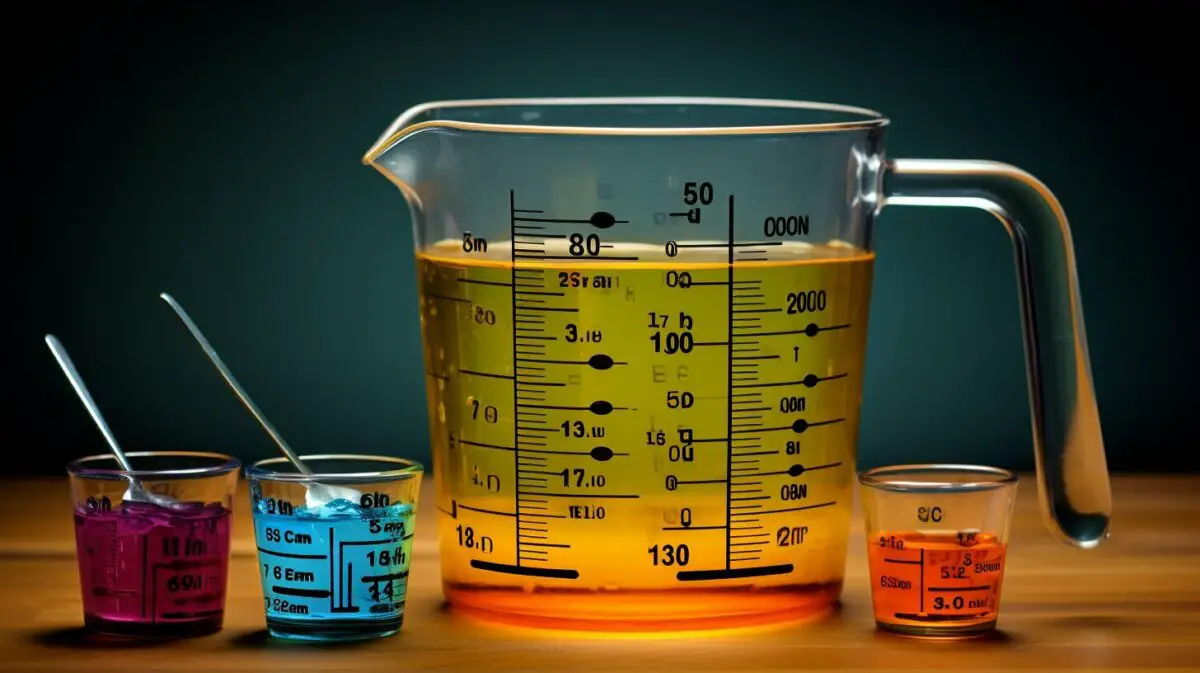
Measurement systems encompass a wide range of units. Let’s explore some related units that you may come across in your culinary adventures. Understanding these units is essential for accurate recipe measurements and ensuring the perfect balance of ingredients.
Liters
Liters are a unit of measurement commonly used in the metric system. They are often used to measure larger quantities of liquid, such as water or milk. One liter is equivalent to 33.8 fluid ounces, making it slightly larger than a quart in the imperial system. When converting between liters and ounces, keep in mind that 1 liter is approximately 35.2 fluid ounces.
Gallons
Gallons are a unit of measurement primarily used in the United States. They are commonly used to measure large quantities of liquid, such as gasoline or cooking oil. One gallon is equivalent to 128 fluid ounces, making it larger than a liter. When converting between gallons and ounces, remember that 1 gallon is approximately 128 fluid ounces.
Cups
Cups are a versatile unit of measurement commonly used in recipes. They are used to measure both liquid and dry ingredients. In the United States, 1 cup is equivalent to 8 fluid ounces or 16 tablespoons. When converting between cups and ounces, keep in mind that 1 cup is approximately 8 fluid ounces.
| Unit of Measurement | Equivalent in Fluid Ounces |
|---|---|
| Liter | 33.8 fl oz |
| Gallon | 128 fl oz |
| Cup | 8 fl oz |
As you can see, there are various units of measurement that you may encounter in your cooking and baking endeavors. Understanding the conversion between these units, along with milliliters and ounces, can help you achieve precise measurements and ensure the success of your culinary creations.

If you ever need to convert between ounces and milliliters, fret not! I have a simple formula to make this conversion a breeze. To convert ounces to milliliters, you can use the following formula:
Milliliters = Ounces x 29.5735
Similarly, to convert milliliters to ounces, use this formula:
Ounces = Milliliters / 29.5735
By using these formulas, you can easily convert between ounces and milliliters for any given measurement. For example, if you want to convert 10 ounces to milliliters, simply multiply 10 by 29.5735, giving you approximately 295.74 milliliters. Conversely, if you have 500 milliliters and want to convert it to ounces, divide 500 by 29.5735, giving you approximately 16.91 ounces.

Knowing this simple formula can save you time and hassle when working with recipes or comparing products that use different measurement units. Whether you’re a professional chef or a home cook, having the ability to convert between ounces and milliliters accurately can make a significant difference in your cooking and baking endeavors. So, keep this formula handy and never worry about converting between ounces and milliliters again!
Using Reference Tables and Online Converters
When it comes to measurement conversions, having readily available reference tables and online converters can be a game-changer. Whether you’re in the kitchen trying to convert milliliters to ounces for a recipe or comparing product sizes, these tools can save you time and ensure accuracy.
Reference tables provide a quick and easy way to look up conversion factors for different units of measurement. With a simple glance, you can find the conversion rate from milliliters to ounces or vice versa. These tables are especially handy when you’re working on multiple recipes or need to perform frequent conversions.
Online converters take convenience to the next level. With just a few clicks, you can input the value you want to convert and instantly get the result. They usually offer a wide range of units to choose from, making it easy to switch between milliliters, ounces, and other common measurements. Plus, many online converters are mobile-friendly, allowing you to access them on the go.
| Measurement | Milliliters | Ounces |
|---|---|---|
| 1 | 29.57 | 1.00 |
| 100 | 2957 | 100.00 |
| 200 | 5914 | 200.00 |
“Converting milliliters to ounces has never been easier. With reference tables and online converters at your fingertips, you can always get accurate and precise measurements.”
So the next time you find yourself needing to convert milliliters to ounces or vice versa, don’t stress. Simply consult a reference table or use an online converter, and you’ll have the accurate measurement you need in no time.

Ready to take your measurement skills to the next level? Check out these tips and tricks for achieving ultimate precision. When it comes to measuring ounces, accuracy is key, especially in cooking, baking, or mixing the perfect cocktail. Here are some techniques to help you achieve precise measurements every time.
- Use a digital scale: Measuring liquids can be challenging, but using a digital scale can provide more accuracy than relying on cups or tablespoons. Simply place your container on the scale, zero it out, and pour the liquid until you reach the desired weight in ounces.
- Level off the liquid: When using a measuring cup, it’s important to level off the liquid to get an accurate measurement. Use a straight-edged utensil, such as a knife or spatula, to remove any excess liquid from the top of the measuring cup. This simple step can make a big difference in achieving precise measurements.
- Invest in quality measuring tools: Using high-quality measuring cups and spoons can greatly improve measurement accuracy. Look for tools with clearly marked increments and sturdy construction. Additionally, consider purchasing measuring cups with smaller increments, which can provide more precise measurements for smaller quantities.
- Practice consistency: Consistency is key when it comes to achieving precise measurements. Develop a standard technique for pouring liquids and be consistent with your measurements. This will help ensure accuracy and reliability in your recipes.
By implementing these tips and tricks, you can greatly improve your measurement skills and achieve precise results in your culinary endeavors. So, whether you’re a professional chef or an aspiring home cook, remember that precision in measurement is the secret ingredient to cooking and baking success.
Table: Common Conversion Factors
| Measurement | Equivalent |
|---|---|
| 1 fluid ounce | 29.57 milliliters |
| 1 milliliter | 0.03 fluid ounces |
| 1 cup | 8 fluid ounces |
| 1 pint | 16 fluid ounces |
| 1 quart | 32 fluid ounces |
Remember, precision in measurement is not only important in the kitchen but also in various aspects of life. So, whether you’re measuring ingredients for a recipe or converting units for daily tasks, these tips and tricks will help you achieve accuracy and efficiency.

In this digital age, mobile apps have become a go-to resource for all kinds of conversions, including measurement conversions. Whether you’re in the kitchen and need to convert milliliters to ounces for a recipe, or you’re at the store comparing prices of different products, a measurement conversion app can make your life easier and more efficient.
One of the key benefits of using mobile apps for measurement conversions is convenience. With just a few taps on your smartphone or tablet, you can instantly convert between different units of measurement, such as milliliters and ounces. Gone are the days of reaching for a calculator or scratching your head trying to remember the formula. These apps do all the work for you, providing accurate and instant conversions at your fingertips.
Another advantage of measurement conversion apps is their versatility. They often come equipped with a wide range of units and measurements, allowing you to convert not only between milliliters and ounces but also between other common units like liters, cups, pints, and more. These apps are like your own personal pocket-sized conversion tool, ready to assist you whenever you need it.
| App Name | Features |
|---|---|
| ConvertIt | Easy-to-use interface, supports multiple units of measurement |
| MeasureMate | Intuitive design, customizable settings, offline functionality |
| UnitConverter | Extensive unit selection, conversion history, real-time updates |
Furthermore, mobile apps for measurement conversions often offer additional features like conversion history, customizable settings, and real-time updates. These extra functionalities can enhance your user experience and make your measurement conversions even more efficient and tailored to your specific needs.
So, whether you’re a home cook looking to improve your recipe measurements, a globetrotter navigating unfamiliar units of measurement, or simply someone who wants to simplify daily tasks, using a mobile app for measurement conversions is a smart choice. It’s like having a knowledgeable assistant in your pocket, ready to provide accurate conversions and save you time and effort.
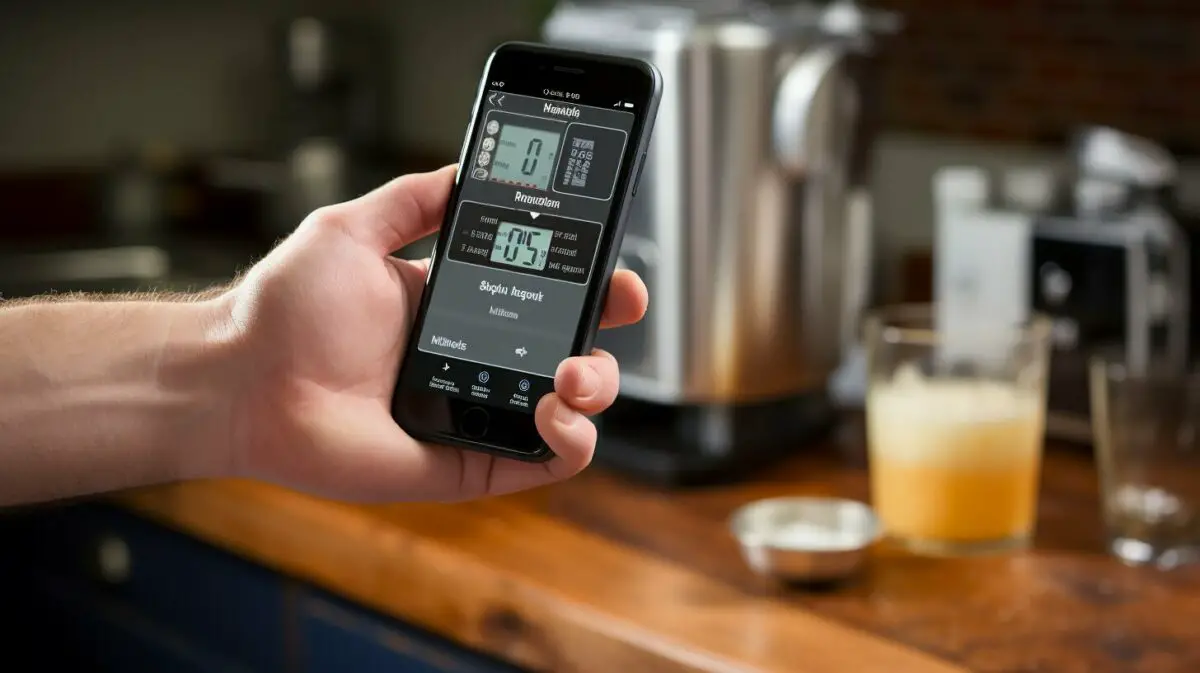
Capacity is an essential aspect of measurement. Let’s dive deeper into understanding how it influences the conversion between ounces and milliliters. When we talk about capacity, we are referring to the amount of space a container can hold. In the case of liquids, capacity is measured in milliliters and ounces, and it plays a crucial role in various everyday tasks, such as cooking, baking, and mixology.

Understanding the relationship between milliliters and ounces is vital for accurate measurements and conversions. In the United States, the imperial system is commonly used, and ounces are the preferred unit for measuring liquids. On the other hand, the metric system, which includes milliliters, is widely adopted globally. Therefore, being able to convert between these two units of measurement is immensely beneficial.
When it comes to measuring capacity, it’s essential to have the right tools. Measuring cups with smaller increments can provide more accurate readings when converting milliliters to ounces. Digital scales are also useful, especially when dealing with precise measurements. It’s important to note that the density of a substance can affect the conversion between ounces and milliliters, so it’s always a good idea to consult a conversion table or use an online converter for precise calculations.
Table: Milliliters to Fluid Ounces Conversion
| Milliliters (ml) | Fluid Ounces (fl oz) |
|---|---|
| 100 | 3.38 |
| 250 | 8.45 |
| 500 | 16.91 |
| 750 | 25.36 |
| 1000 | 33.81 |
Having a clear understanding of capacity and the conversion between milliliters and ounces opens up a world of possibilities in the kitchen and beyond. Whether you’re following a recipe, experimenting with mixology, or simply comparing product sizes, this knowledge will empower you to make accurate measurements and achieve the desired results. So remember, capacity matters, and having the ability to convert between ounces and milliliters will make your life easier in countless ways.
The Importance of Accurate Measurements in Cooking and Baking
Accurate measurements can make or break a recipe. Discover why precise measurement is crucial in the culinary world. When it comes to cooking and baking, precise measurements are essential to ensure consistent results and the perfect balance of flavors. From delicate pastries to savory sauces, accurate measurements help maintain the integrity of a dish and ensure that it turns out as intended.
Whether you are following a recipe or experimenting with your own creations, accurate measurements allow you to replicate successful dishes and avoid disappointing outcomes. Just a slight variation in the amount of an ingredient can alter the taste, texture, and overall quality of the final product. Imagine adding too much salt or sugar to a cake batter, resulting in an overly salty or overly sweet treat. By measuring ingredients accurately, you can avoid such mishaps and create delicious dishes every time.
In addition to taste and texture, accurate measurements are also important for food safety. For example, in baking, precise measurements of leavening agents like baking powder or yeast are necessary to achieve the right rise and structure in bread and pastries. Over- or under-measuring these ingredients can lead to dense or flat products. Similarly, accurate measurement of temperature and cooking times ensures that meats and other perishable foods are cooked to the correct internal temperature, reducing the risk of foodborne illnesses.
So, how can you ensure accurate measurements in your cooking and baking endeavors? Utilize measuring tools such as measuring cups, spoons, and digital scales to measure both dry and liquid ingredients. When measuring liquids, use a clear measuring cup on a flat surface and view it at eye level to ensure accuracy. For dry ingredients, use leveled off measurements with a straight edge, avoiding packing or heaping the ingredient in the measuring cup.
Accurate Measurement Tips:
- Use measuring spoons and cups for precise quantities.
- Level off dry ingredients with a straight edge.
- Follow the recipe’s specific instructions for measurement techniques.
- Use digital scales for greater precision, especially for professional baking.

Accurate measurements are the foundation of successful cooking and baking. By understanding and implementing precise measurement techniques, you can elevate your culinary creations and bring out the best flavors in every dish.
| Ingredient | Measurement |
|---|---|
| All-purpose flour | 1 cup (120g) |
| Granulated sugar | 1/2 cup (100g) |
| Butter | 1 stick (113g) |
| Baking powder | 1 teaspoon (5g) |
| Salt | 1/2 teaspoon (2.5g) |
| Milk | 1/4 cup (60ml) |
Conclusion – How Many Ounces Are in 750 ml
Understanding how many ounces are in 750 ml is a valuable skill that can enhance your cooking, baking, and everyday life. By knowing that 750 ml is equal to approximately 25.4 fluid ounces, you can accurately measure drinks like spirits and calculate alcohol content or serving sizes. This knowledge is especially important when following recipes that use metric measurements or when comparing products that are labeled in different units.
There are various tools and techniques available for measuring ounces in a 750 ml bottle. Using measuring cups with smaller increments or digital scales can help you achieve more precise measurements. Leveling off the liquid and using a measuring cup with smaller increments can also contribute to measurement accuracy.
Knowing how many ounces are in a 750 ml bottle can have practical benefits in various areas of your life. In the kitchen, it allows you to follow recipes accurately and achieve consistent results. It also helps when comparing prices of products, especially when you’re trying to determine which option offers better value. Moreover, having a good grasp of measurement conversions, like milliliters to ounces, can simplify your daily tasks and improve overall efficiency in different aspects of your life, be it in the kitchen or beyond.
So, whether you’re a passionate cook, a devoted baker, or simply someone who appreciates precision in measurement, understanding how many ounces are in 750 ml is a valuable skill that can elevate your culinary adventures and make your daily tasks a breeze. With this knowledge, you can confidently navigate the world of measurement conversions and unlock a whole new level of accuracy and efficiency in your kitchen and beyond.
FAQ – How Many Ounces Are in 750 ml
Q: How many ounces are in 750ml?
A: 750ml is equal to approximately 25.4 fluid ounces.
Q: Why is it important to convert between milliliters and ounces?
A: Converting between milliliters and ounces is important for accurate recipe measurements and comparing products.
Q: What tools and techniques can I use to convert milliliters to ounces?
A: You can use measuring cups with smaller increments or digital scales to convert milliliters to ounces.
Q: How can I achieve measurement accuracy in fluid ounces?
A: To achieve measurement accuracy, level off liquids and use measuring cups with smaller increments.
Q: What are the benefits of knowing how many ounces are in a 750ml bottle?
A: Knowing the conversion between milliliters and ounces can be beneficial for measuring drinks, cooking, baking, and comparing prices.
Q: How can measurement conversions simplify daily tasks?
A: Measurement conversions, including milliliters to ounces, can simplify daily tasks and improve overall efficiency in various aspects of life.
Our Friends:
- https://www.fiscalflamingo.com/750-ml-to-oz-conversion/
- https://flightwinebar.com/blog/how-many-ounces-are-in-750-ml/
- https://eugenesdiner.com/food-recipes/how-many-ounces-in-750-ml-bottle
Related Recipes:
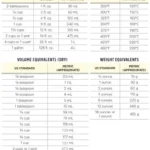 How Many Cups Are in a Liter: Unlocking the Mystery
How Many Cups Are in a Liter: Unlocking the Mystery
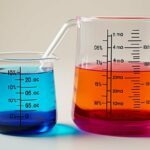 How Many Milliliters in an Ounce? (Perfect Measurement Conversion Guide)
How Many Milliliters in an Ounce? (Perfect Measurement Conversion Guide)
 How Many Milliliters in a Quart? (Perfect Measurement Conversion Guide)
How Many Milliliters in a Quart? (Perfect Measurement Conversion Guide)
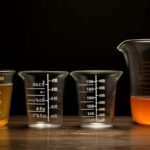 How Many Milliliters in a Pint? (Measurement Conversion Guide)
How Many Milliliters in a Pint? (Measurement Conversion Guide)
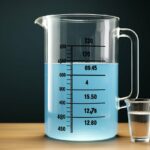 How Many Milliliters in a Gallon? (Perfect Measurement Conversion Guide)
How Many Milliliters in a Gallon? (Perfect Measurement Conversion Guide)
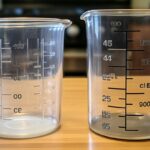 How Many Quarts in a Liter? (Perfect Measurement Conversion Guide)
How Many Quarts in a Liter? (Perfect Measurement Conversion Guide)
 How Many Fluid Ounces in a Cup? (Perfect Measurement Conversion Guide)
How Many Fluid Ounces in a Cup? (Perfect Measurement Conversion Guide)
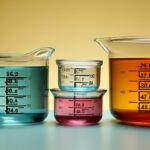 How Many Ounces Are in a Quart? (Ultimate Measurement Conversion Guide)
How Many Ounces Are in a Quart? (Ultimate Measurement Conversion Guide)



